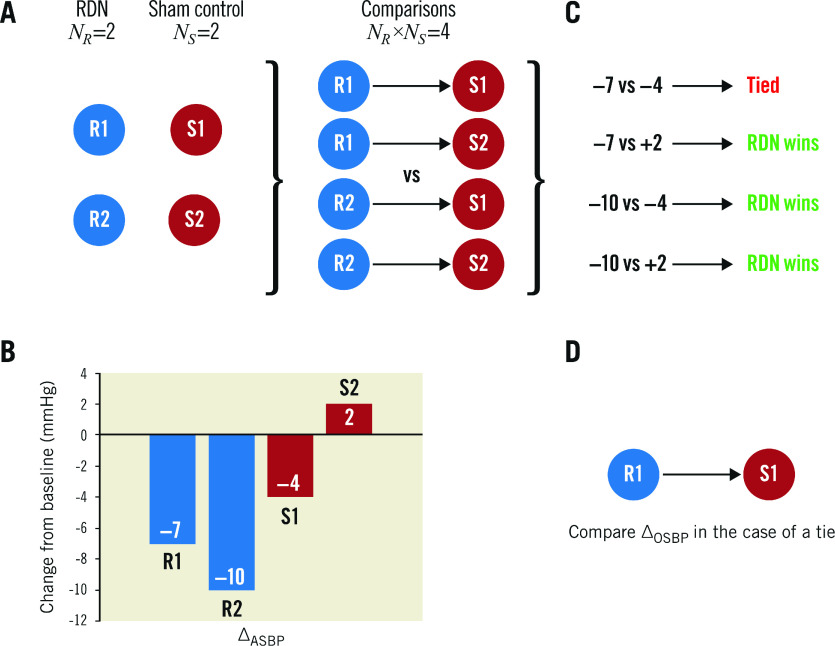Figure 1.
Conceptual illustration of the prioritised endpoints methodology involving four hypothetical subjects – two randomised to renal denervation (R1 and R2) and two randomised to sham control (S1 and S2). A) The generalised prioritised endpoints method requires each RDN subject to be compared to each sham control subject, resulting in 2×2=4 pairs. B) Hypothetical outcomes (change from baseline 24-hr mean ASBP; ΔASBP) for each of the four subjects. C) Endpoint comparison of each subject (RDN vs sham control) and the resulting classification of the pair based on a threshold of 5 mmHg. D) For pairs that result in a tie, compare patients using the next specified endpoint, in this case change from baseline mean OSBP; ΔOSBP. ASBP: ambulatory systolic blood pressure; OSBP: office systolic blood pressure; RDN: renal denervation; NR: number of RDN patients; NS: number of sham control patients

